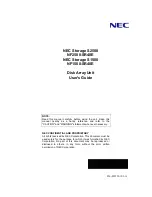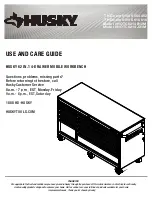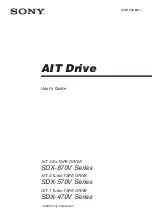
Rev. 1.10
84
November 26, 2019
Rev. 1.10
85
November 26, 2019
HT68FB240
USB Low Speed Flash MCU
I
2
C Interface
The I
2
C interface is used to communicate with external peripheral devices such as sensors etc.
Originally developed by Philips, it is a two line low speed serial interface for synchronous serial
data transfer. The advantage of only two lines for communication, relatively simple communication
protocol and the ability to accommodate multiple devices on the same bus has made it an extremely
popular interface type for many applications.
I
2
C Master/Slave Bus Connection
I
2
C Interface Operation
The I
2
C serial interface is a two line interface, a serial data line, SDA, and serial clock line, SCL. As
many devices may be connected together on the same bus, their outputs are both open drain types.
For this reason it is necessary that external pull-high resistors are connected to these outputs. Note
that no chip select line exists, as each device on the I
2
C bus is identified by a unique address which
will be transmitted and received on the I
2
C bus.
When two devices communicate with each other on the bidirectional I
2
C bus, one is known as the
master device and one as the slave device. Both master and slave can transmit and receive data,
however, it is the master device that has overall control of the bus. For this device, which only
operates in slave mode, there are two methods of transferring data on the I
2
C bus, the slave transmit
mode and the slave receive mode.
There are several configuration options associated with the I
2
C interface. One of these is to enable
the function which selects the SIM pins rather than normal I/O pins. Note that if the configuration
option does not select the SIM function then the SIMEN bit in the SIMC0 register will have no
effect. A configuration option exists to allow a clock other than the system clock to drive the I
2
C
interface. Another configuration option determines the debounce time of the I
2
C interface. This uses
the internal clock to in effect add a debounce time to the external clock to reduce the possibility of
glitches on the clock line causing erroneous operation. The debounce time, if selected, can be chosen
to be either 1 or 2 system clocks.
S T A R T s i g n a l
f r o m M a s t e r
S e n d s l a v e a d d r e s s
a n d R / W b i t f r o m M a s t e r
A c k n o w l e d g e
f r o m s l a v e
S e n d d a t a b y t e
f r o m M a s t e r
A c k n o w l e d g e
f r o m s l a v e
S T O P s i g n a l
f r o m M a s t e r
















































